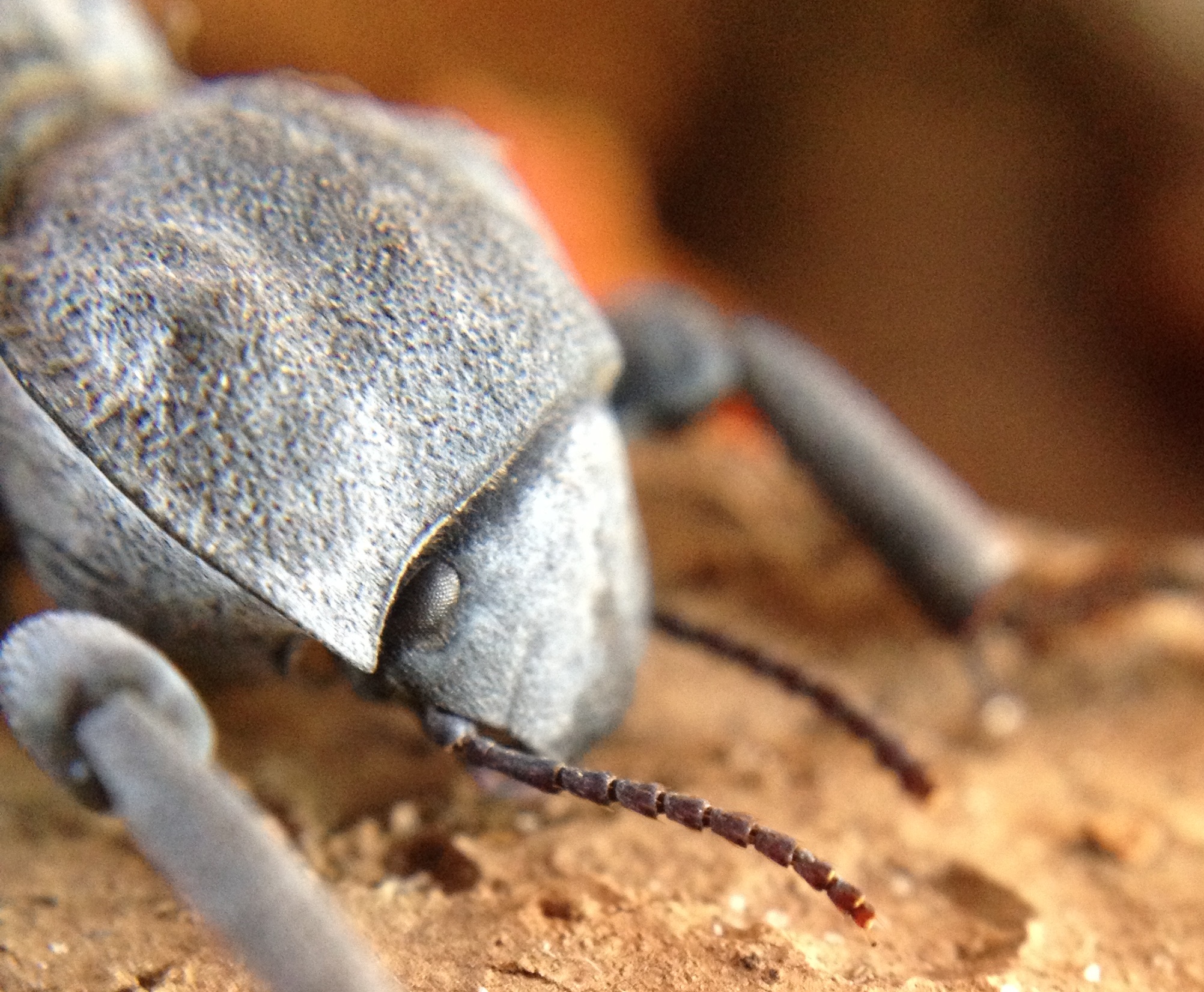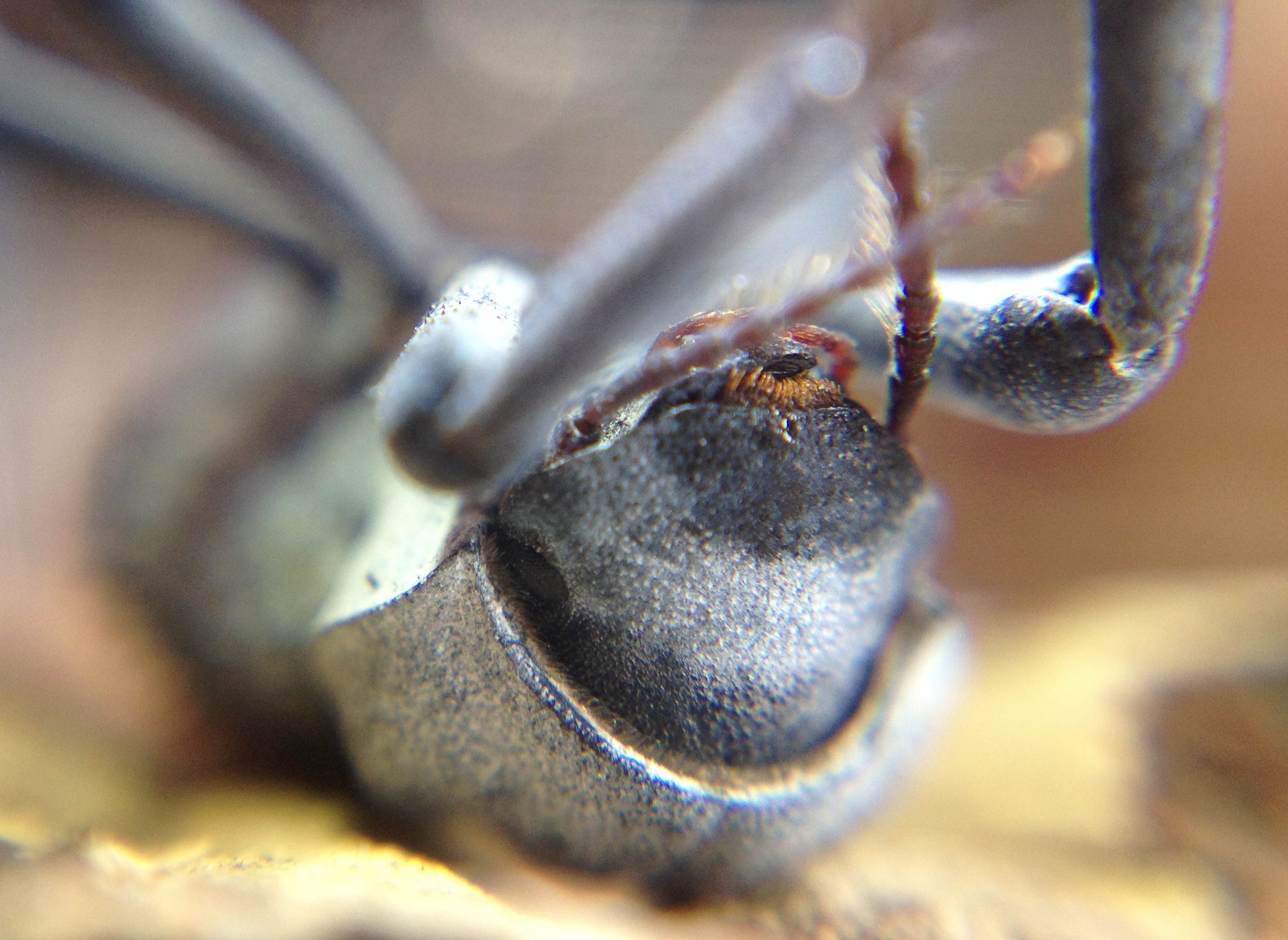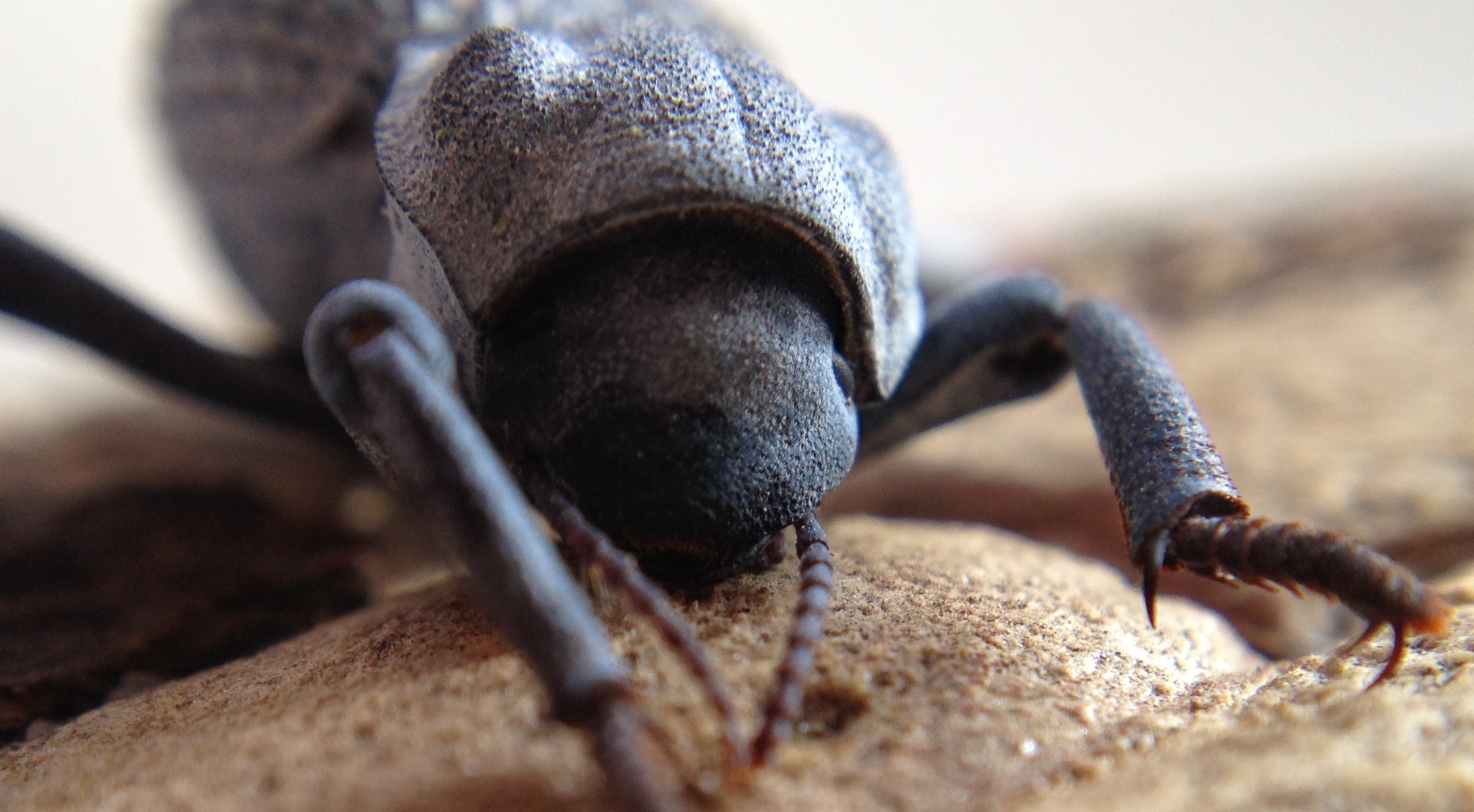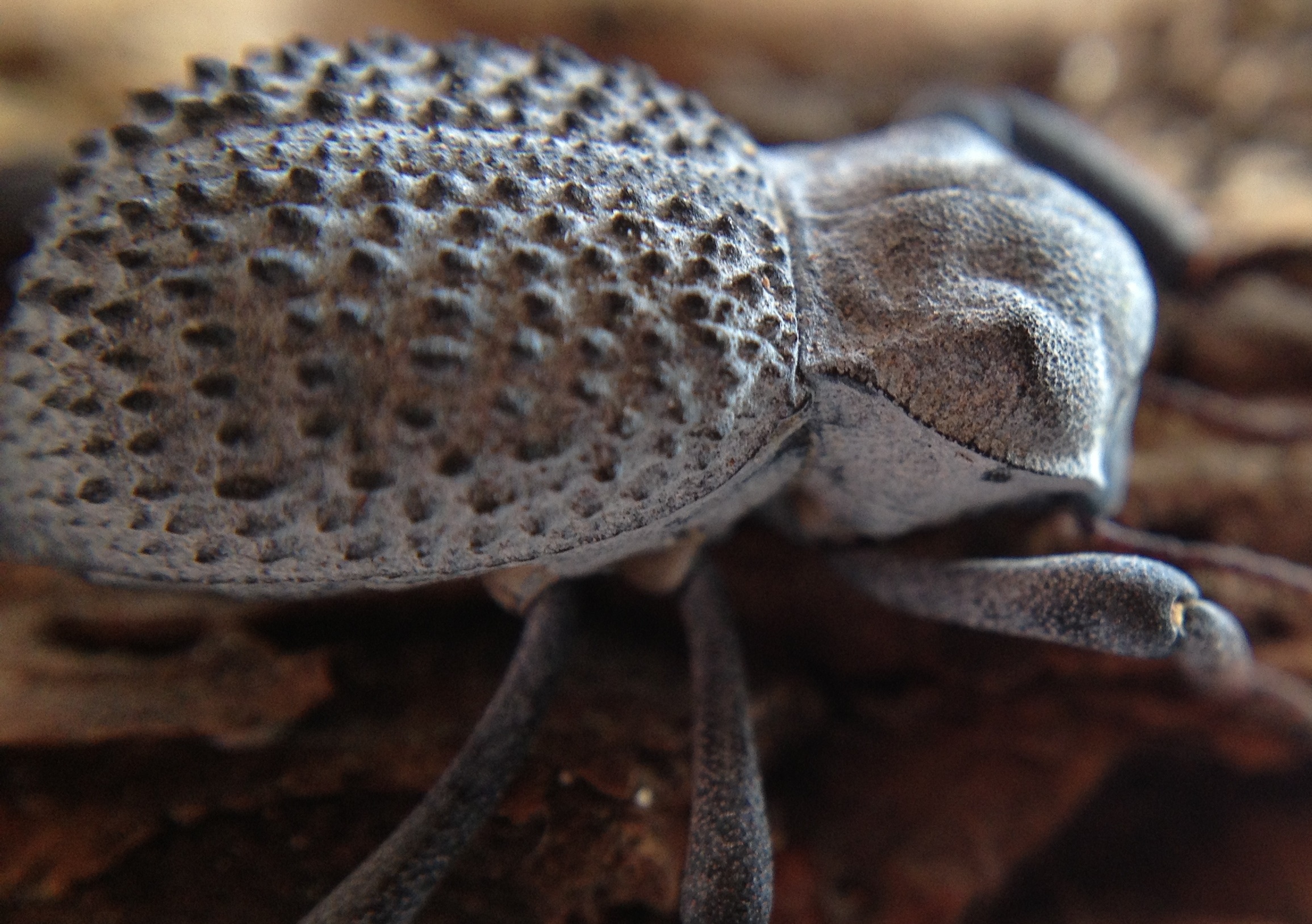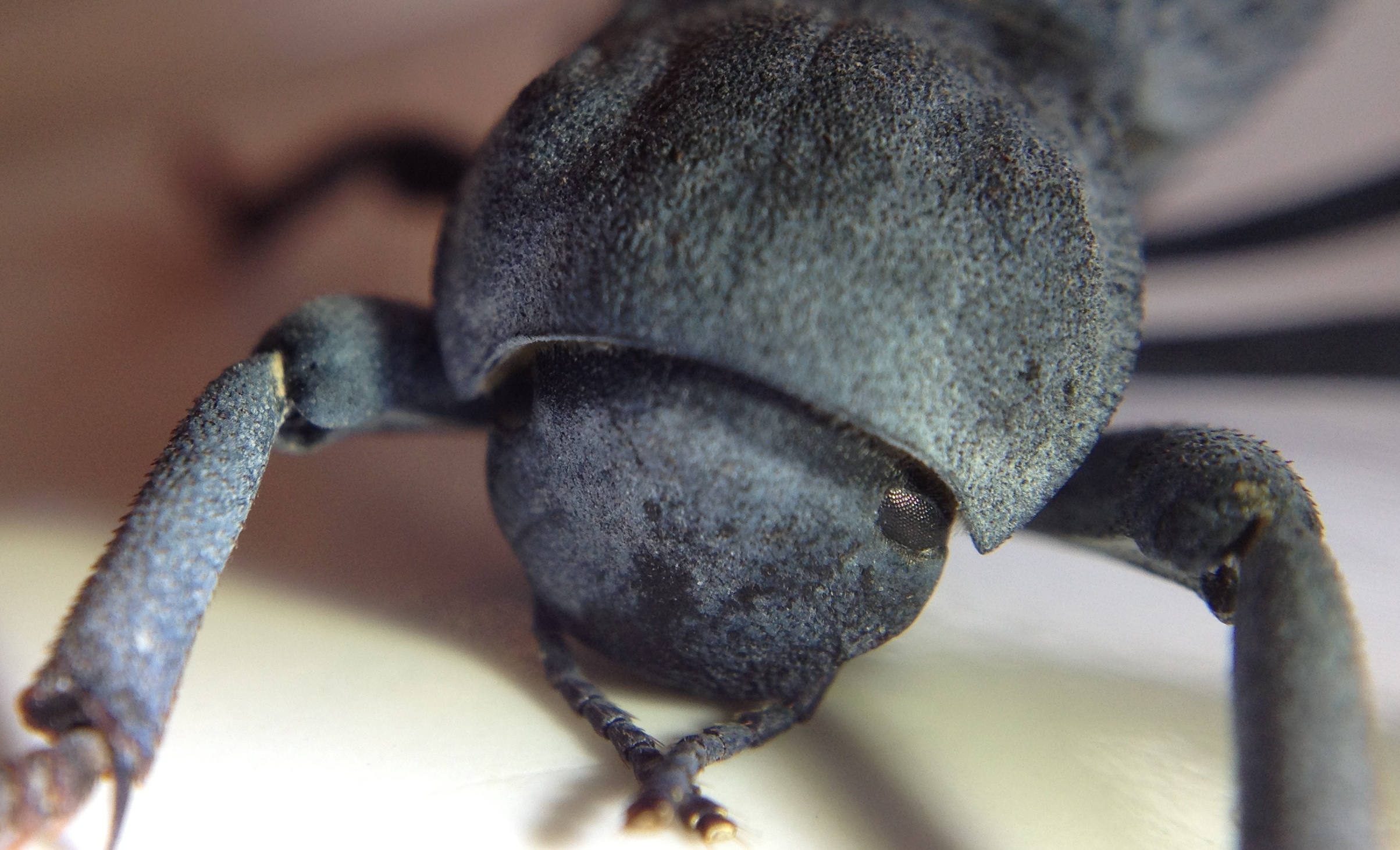We recently acquired a bunch of new bugs to take with us to schools and outreach events. These are all organisms you could find in and around Nevada. Some of them are great to hold and handle; others are best to observe from a distance. Over the next few weeks we’ll introduce them, along with some information about their biology.
Today’s bug is the blue death-feigning beetle, otherwise known as the blue iron-clad beetle, Asbolus verrucosus. These beetles belong to the family Tenebrionidae, the darkling beetles. This is a large family, with over 20,000 named species! One species you may already know in this family is Tenibrio molitor, also known as the mealworm, which is often used as food for common pet reptiles, fish, and birds. Other species in this family are sometimes (incorrectly) called ‘stink bugs,’ as they can release a bad-smelling odor when disturbed. Death feigning beetles, however, have no such chemical defense, and so are great to be handled. The genus, Asbolus, comes from Greek mythology- Asbolus was a centaur whose name translates to “sooty.” The species name, verrucosus, comes from the Greek meaning “warty,” a reference to the bumpy appearance of their abdomen. Their common name comes from their behavior of playing dead when picked up by some curious passer-by, human or otherwise. This behavior deters predators who only eat living prey items.
These beetles are native to the desert southwest, including southern Nevada, southern California, and the Sonoran Desert. Their color comes from a waxy coating, which helps protect them from evaporative water loss, a major danger in the desert. As with many beetles, they are detritovores, feeding on rotting vegetation or other decomposing debris. This makes them key players in helping cycle nutrients through ecosystems, especially desert areas where bacterial decomposition is extremely slow.
Above all, these beetles are great fun- they are active throughout the day, easy to hold, and big enough to get a good close look at them. We will have them with us at the butterfly house this year and we hope you’ll stop by and see them! Feel free to ask any questions below in the comments section (click on the post title to access the comment space).
Also, here’s a small video from Bugs in Cyberspace, where you can purchase these bugs to keep as your own!

